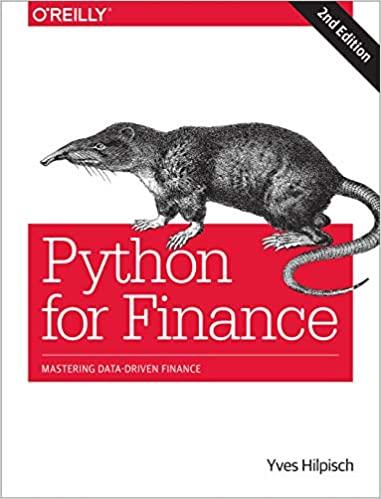What is the intrinsic value of a share of stock ifexpected dividends are $3/share and the expected price in 1 year is $81/share? Assume a discount rate of 12%. Now we assume the dividends are expected to increase at a steady 8% compound rate. The ected price increases at the same 8% rate. What is the intrinsic value of such a share for horizons of 2, 3, 10, 20, 30, 50, 100 years? I have mentioned in class that this growth rate is specifically assigned so that the intrinsic value of such a stock is constant for different horizons. Now I need you develop the formula of such growth rate just as what I did in class. So now you have the dividend one year later, D1 The stock price one year later, P Discount rate, r You need to develop a formula for the growth rate g so that the intrinsic value of such a stock is constant for different horizons. (3%) In the PowerPoint Chap 7-35,7-36, we have encountered a firm Aqua America. The dividend of that firm seems to have a constant growth rate. 2. I need you guys to estimate that growth rate from the data I have uploaded for you guys. You can download the data from the files for the 11/14 course. Hint: You can estimate the constant growth rate either by (0) average increase rate (i) fitting an AR1) process for the data and take the coefficient as an indication of that growth rate (The second method is much harder and can guarantee you get the full 3% credit) (4%) Again, in the files for the 11/14 course, and in the second sheet, you can actually change the ROE and se how this change the PV & PVFG of the stock. Here I need you use this simulated data to make an 3. argument that why a firm in different stages of its life cycle has different dividend payout poljcy What is the intrinsic value of a share of stock ifexpected dividends are $3/share and the expected price in 1 year is $81/share? Assume a discount rate of 12%. Now we assume the dividends are expected to increase at a steady 8% compound rate. The ected price increases at the same 8% rate. What is the intrinsic value of such a share for horizons of 2, 3, 10, 20, 30, 50, 100 years? I have mentioned in class that this growth rate is specifically assigned so that the intrinsic value of such a stock is constant for different horizons. Now I need you develop the formula of such growth rate just as what I did in class. So now you have the dividend one year later, D1 The stock price one year later, P Discount rate, r You need to develop a formula for the growth rate g so that the intrinsic value of such a stock is constant for different horizons. (3%) In the PowerPoint Chap 7-35,7-36, we have encountered a firm Aqua America. The dividend of that firm seems to have a constant growth rate. 2. I need you guys to estimate that growth rate from the data I have uploaded for you guys. You can download the data from the files for the 11/14 course. Hint: You can estimate the constant growth rate either by (0) average increase rate (i) fitting an AR1) process for the data and take the coefficient as an indication of that growth rate (The second method is much harder and can guarantee you get the full 3% credit) (4%) Again, in the files for the 11/14 course, and in the second sheet, you can actually change the ROE and se how this change the PV & PVFG of the stock. Here I need you use this simulated data to make an 3. argument that why a firm in different stages of its life cycle has different dividend payout poljcy


















